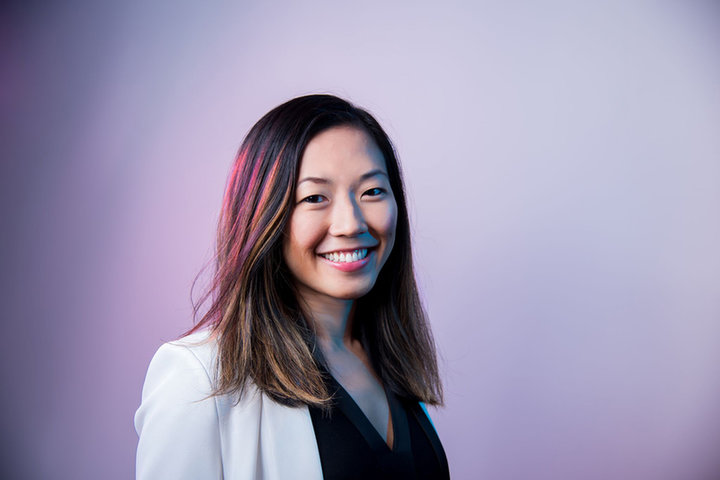Drug Development
Verge Genomics: employing AI to improve drug discovery
Verge Genomics has successfully seized the immense opportunities offered by AI and machine learning algorithms to develop new drug discovery processes for neurodegenerative diseases such as Parkinson’s. Allie Nawratspeaks to CEO Alice Zhang to find out how the platform works and why she believes it is superior to traditional approaches.
Artificial Intelligence (AI) and machine learning has begun to dominate innovation in the medical field by tapping into increasing quantity and quality of data. For example, it has transformed diagnosis of complex diseases, the efficiency of medical devices such as prosthetic limbs, and improved communication between patients and medical professionals.
Now, US-based start-up Verge Genomics has applied AI algorithms to the drug discovery process. The company’s revolutionary approach relies upon the large datasets it has collected from deceased patients with neurodegenerative diseases. Using this strategy it has successfully produced two possible drug candidates.
To support its innovative approach and its pipeline, Verge recently secured $32m in early venture capital financing from a mixture of technology firms and life sciences companies, bringing the company’s total funding since its foundation in 2015 to $36m.

Verge Genomics CEO Alice Zhang. Image courtesy of Verge Genomics
Improving drug discovery using AI
Verge was co-founded by Alice Zhang, who is now its CEO, following her realisation while studying for her PhD that "the way pharma companies discover drugs - using brute force and guesswork - was broken".
Instead Verge applies learning AI algorithms to its large all-human genomic datasets to move drug discovery from the laboratory to the computer. As Zhang explains: “By using computational analysis on human genomic data, I discovered that drug discovery could be made both more effective and more efficient.
“By using both the front-end (machine learning) and the back-end infrastructure (experimental biology), we can rapidly test computational predictions in the lab and generate an enormous amount of proprietary, validation data that retrains our models and improves our algorithms at unprecedented scale and speed.”
The way pharma companies discover drugs - using brute force and guesswork - was broken
One of the main challenges facing medical companies seeking to use AI to improve their systems or their products is that these types of algorithm rely upon large quantities of high quality data.
However, “at Verge we’ve addressed this problem by generating our own data to create a data advantage that reinforces its algorithmic advantage,” says Zhang.
The use of all-human data also means that, unlike standard clinical trials that rely on animal data, Verge uses human data from the beginning of its drug discovery process.
Focusing on discovering drugs for neurodegenerative diseases
Verge’s AI-based drug discovery approach currently focuses on neurodegenerative diseases, including Alzheimer’s, Parkinson’s and amyotrophic lateral sclerosis (ALS).
This is because Zhang believes that pharmaceutical companies’ flawed approach to drug discovery "has completely stalled for more complex brain diseases", thereby making neurodegeneration one of the world’s greatest unmet medical needs.
The main reason why traditional drug discovery techniques have struggled to create treatments for neurodegenerative diseases is that they often focus on single genes, whereas ALS, Alzheimer’s and Parkinson’s are caused by the interactions between hundreds of genes.
Zhang explains: “Our decision to focus on neurodegenerative disorders comes from where we saw the biggest need within the industry and could create the biggest impact. Our machine learning approach is best suited for complex, multi-gene diseases.”
Our machine learning approach is best suited for complex, multi-gene diseases
Verge’s genomic database, which was created in partnership with many academic and research centres, is composed of brain tissue samples from ALS and Parkinson’s patients who have passed away.
Zhang highlights the importance of collaborations in accumulating one of the most comprehensive data sources for ALS: “The partnerships we have formed have been vitally important to the development of our proprietary compounds because they have been instrumental to providing the first building blocks to the process: the data sets used target specific genes.
“We opportunistically evaluate partnerships with pharmaceutical companies who can help us develop these assets.”
The company’s algorithms have used this data to flag 22 novel therapeutic targets for ALS through screening thousands genes from the data set. These targets are then tested in the patient’s brain cells, as well as animal models. Currently Verge has generated two successful compounds from its integrated AI approach.
“We are very proud of providing proof of concept for our drug discovery pipeline by generating two compounds through targeted discovery. These milestones have taken our research to the next level and has inspired more confidence within the industry,” says Zhang.
Plans to develop Verge’s AI-based drug discovery platform
Verge plans to use the $32m boost in funding to help the company achieve its aim of bringing its AI-generated therapies for ALS and Parkinson’s to the clinic within the next few years.
“This funding will allow us to advance our most promising drug candidates towards the clinic while continuing to expand our proprietary datasets and therapeutic portfolio to cover additional indications,” Zhang says.
We are quickly progressing our ALS and Parkinson’s programmes towards the clinic
“We are quickly progressing our ALS and Parkinson’s programmes towards the clinic and expect human point-of-care in the next five years.”
The company is also looking beyond diseases related to the central nervous system. "We hope to use the current neurodegenerative diseases we are targeting as a starting point and replicate that process with more diseases both within neurodegeneration and in new therapy areas,” she concludes.
Go to top